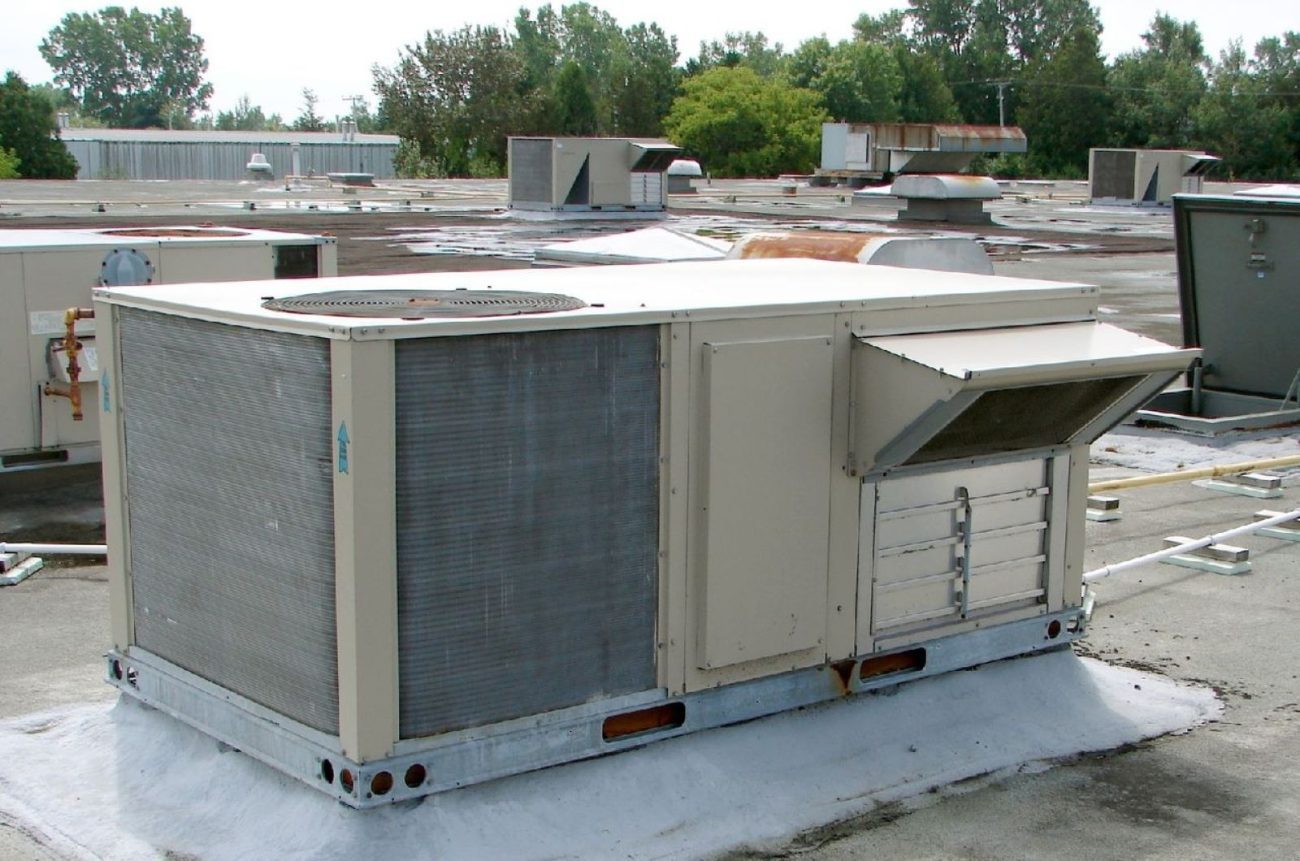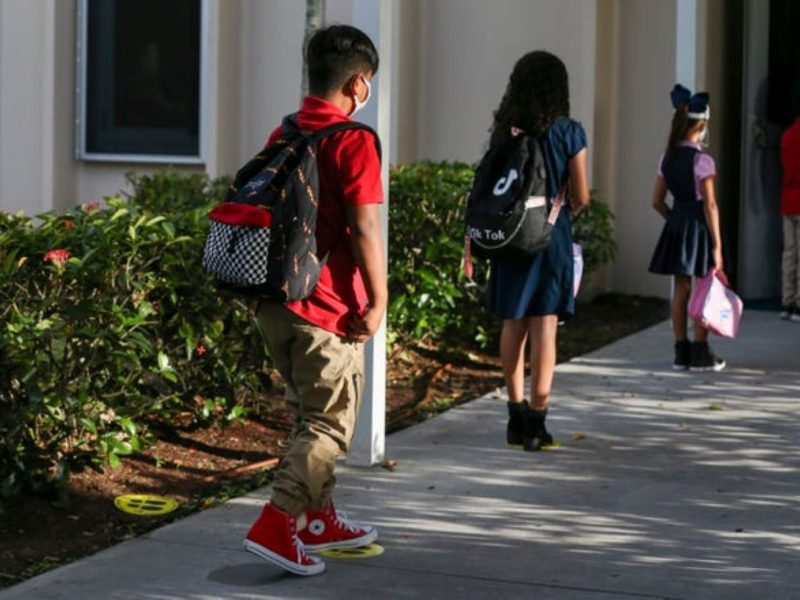Time for ventilation in schools to get a proper airing
Halifax Examiner | by Jennifer Henderson | August 17, 2020
We often hear that schools need to be “safe spaces” for children — free from worries about bullying, for instance. But what about guaranteeing that it’s safe for children (and teachers and maintenance staff) to breathe the air in those buildings from early September until the end of June?
As if COVID-19 hasn’t given us enough to think about, there’s a growing body of scientific study that suggests the virus can spread not only by droplets from coughing and sneezing, but through microscopic droplets called aerosols that float through the air.
In a July 30 article in The Atlantic magazine, Don Milton, a medical doctor and environmental-health professor at the University of Maryland, compares larger droplets “to the spray from a Windex dispenser” and the smaller, airborne particles (aerosols) “to the mist from an ultrasonic humidifier.” The article goes on to argue that when it comes to preventing the spread of infections, increasing the amount of fresh air in classrooms and improving ventilation systems could be as important as physical distancing and wearing masks.
Earlier this summer, the World Health Organization (WHO) published a scientific brief acknowledging the possibility of airborne transmission, but still concluding that COVID-19 is “primarily transmitted” between people through respiratory droplets, and that the question needs “further study.”
Then last Wednesday, the New York Times reported that a research team at the University of Florida had managed to grow viral particles of COVID-19 literally taken out of the air:
A research team at the University of Florida succeeded in isolating live virus from aerosols collected at a distance of 7 to 16 feet from patients hospitalized with Covid-19 — farther than the six feet recommended in social distancing guidelines.
The room had six air changes per hour and was fitted with efficient filters, ultraviolet irradiation, and other safety measures to inactivate the virus before the air was reintroduced into the room.
That may explain why the researchers found only 74 virus particles per liter of air, said John Lednicky, the team’s lead virologist at the University of Florida. ‘Indoor spaces without good ventilation – such as schools – might accumulate much more airborne virus’, he said.”
This Florida study has not been peer-reviewed and critics say it’s unclear whether the small amount of virus that was cultured would be enough to infect an individual. Scientists do agree it is an important breakthrough, but the jury is still out on whether COVID-19 can be transmitted through the air.
The Atlantic article points out that most of the “super-spreader” events happened indoors in crowded, poorly ventilated spaces, so it’s difficult to sort out the variables when you think about the outbreaks related to weddings, bars, cruise ships, nursing homes, and meat-packing plants.
What are the implications for schools?
Federal public health guidelines for schools revolve around increasing ventilation for students of all ages. They say:
- move activities outdoors when possible (for example, lunch, classes, physical activity) and consider moving classrooms outside when space and weather permit
- ensure that the ventilation system operates properly
- increase air exchanges by adjusting the HVAC system
- open windows when possible and if weather permits
Nova Scotia public health guidelines are similar, but they do not specifically mention increasing air exchanges. They say: “Increase ventilation — open windows when it is safe to do so. Ensure ventilation system operates properly and is routinely maintained.”
This is an obvious challenge for older schools where the windows don’t open or in classrooms which do not even have windows.
Across the province, there is a mixture of air-handling systems depending on the size and age of the school. Some schools rely solely on windows. Newer schools — such as the P3s which were built with mechanical air-handling systems — have settings which can be adjusted to increase the flow of fresh air into the building, for example starting earlier in the morning.
In addition to announcing a new mask policy and allocating $40 million to hire more substitute teachers, cleaners, and lunch monitors last Friday, Education Minister Zach Churchill announced, “a school by school ventilation survey is underway.”
With school reopening in three weeks, it might appear to be late in the day to be gathering information to develop a plan to address deficiencies, but it’s a necessary first step toward improving air quality in schools. However, it didn’t go remotely as far as Ontario Education Minister’s announcement last week to spend $50 million specifically to upgrade school ventilation systems.
CBC News quotes Jeffrey Siegel, a professor of civil engineering at the University of Toronto who researches and consults on healthy buildings, ventilation, and indoor air quality. He says now is a golden opportunity to update outdated systems. “I’m really worried about when we start heating our buildings in the fall,” Siegel said. “When we heat buildings, they get drier and droplets travel much further because they shrink.”
Teacher concerns
Why should we be talking about this? I know one elementary school teacher who isn’t waiting for the province to start looking at air quality and ventilation systems. Both she and her spouse are in the high-risk category for COVID-19 because of underlying health conditions. For the first time in more than 20 years, she will teach six-year-olds from her desk behind a Plexiglass shield, like cashiers do these days. She has also spent just under $200 dollars at a hardware store to purchase a HEPA (high-efficiency particulate absorbing) filter for a portable unit sized to fit her extra-large classroom. She doesn’t begrudge the out-of-pocket cost because she considers it an added layer of personal protection. It might also help protect her young students.
She took these actions after questioning education administrators about how they planned to improve ventilation to address COVID concerns and being told that, “schools are following public health guidelines.” She wanted more specifics, wary of doing something that might have unintended consequences in her classroom after reading about this situation reported in The Atlantic:
At a Korean call center, where people talk all day, 94 out of 216 people on one floor of the building were infected, with cases clustered on one side of the floor but some as far as 20 desks away from each other, with a few as far away as the opposite wall. Only three people on other floors were infected, despite the employees sharing a lobby and elevators, reinforcing that surfaces aren’t efficient transmitters, but that shared air pockets can be, almost regardless of distance.
Can NS improve ventilation in classrooms?
Public health guidelines are broad (“ensure ventilation systems operate properly”) and leave it up to Regional Education Centres to figure out how to comply. Do the settings on the school ventilation system need to be tweaked to permit more air exchanges per hour? And, should you upgrade the ventilation system with more expensive filters that meet the higher MERV-13 (Minimum Efficiency Reporting Value) standard to filter out viral particles, which are many orders of magnitude smaller than even mold spores or pollen?
One ventilation technician who works in schools agreed to speak only to provide background information. That technician said no school in Nova Scotia uses MERV-13 filters, and they don’t necessarily provide “a silver bullet.” He says they would have to be changed and maintained more often, because if not, they would clog and create more problems than they solve. In his opinion, most Regional Education Centres would have personnel who could carry out assessments of the air-handling systems but would need to hire ventilation companies to make the necessary changes. He believes that improving air-quality in most schools by the time winter sets in is doable.
Another ventilation tech told the Halifax Examiner that without subsequent changes to the duct work, increasing the capacity of air-handling systems to let in more fresh air could increase the noise in the classroom. In his opinion, improving ventilation in many Nova Scotia classrooms “will not be inexpensive, and could involve several months waiting for components that are back-ordered from China.” Maybe federal infrastructure money for dealing with pandemic issues can be tapped, he says, to help improve air quality in schools.
At the moment, the nitty-gritty of how to comply with those public health guidelines on improving air flow rests with the province’s eight school districts, now dubbed Regional Education Centres. Some of the larger Centres have contracts with ventilation companies. The Education Department has told schools to keep the windows open and hold as many classes and activities (such as physical education and lunch) outdoors. The Halifax Examiner asked all eight Regional Education Centres what is being done indoors to improve ventilation in their schools. We received identical replies from three of eight school districts: the Halifax Region Education Centre, the Strait Region Education Centre and the Colchester-Chignecto Region Education Centre:
We are working to ensure all rooms have operable windows and we encourage the opening of windows to increase air flow. In order to ensure we provide the best functioning system, we manage the maintenance of our HVAC systems carefully and ensure routine maintenance like filter changes are performed as required. The RCE Operations staff is conducting a school-by-school assessment of the ventilation air handler systems.
As with so many vulnerable points in society, it’s disappointing it took a pandemic to force a review of how to improve air quality in buildings where children spend hundreds of hours each year. A lot is riding on whether Nova Scotia’s government and educational institutions can ensure that students will be able to breathe safely in our schools.






